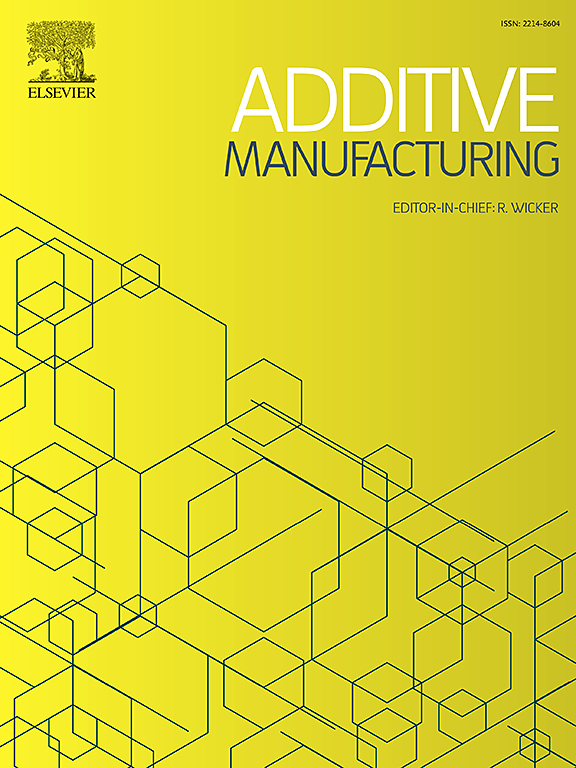定向能沉积中粉末诱导气体孔隙度的数值分析:形成、演化和缓解
IF 10.3
1区 工程技术
Q1 ENGINEERING, MANUFACTURING
引用次数: 0
摘要
定向能沉积(DED)是金属增材制造的一个重要分支,在复杂零件的制造和原位修复方面具有巨大的潜力。然而,在DEDed零件中不可避免地引入了气体孔隙缺陷,严重影响了零件的疲劳性能。本文创新性地将离散元法(DEM)与计算流体动力学(CFD)模型相结合,对熔池中粉末动力学到气泡演化,最后到凝固轨迹孔隙夹闭的过程进行了跟踪。结果表明,流体阻力对熔池内气泡的演化起主导作用。具体而言,在直流区,小气泡直接从熔池中逸出,而在涡旋区,小气泡像卫星一样的旋转运动促进了熔池的聚并和圈闭,导致熔池顶部和底部的孔隙密度更高。最后,提出了两种减轻气体孔隙度的方法,即粉末流尺寸裁剪和激光束整形。这项工作可以进一步加深对DED中耦合物理现象和气体孔隙形成的认识。本文章由计算机程序翻译,如有差异,请以英文原文为准。
Numerical analysis of powder-induced gas porosity in directed energy deposition: Formation, evolution, and mitigation
Directed energy deposition (DED) is an important branch of metal additive manufacturing and holds significant potential for the manufacturing and in-situ repairing of complex parts. However, the gas porosity defect is inevitably introduced in the DEDed parts, which severely affects the fatigue performance of the parts. This paper innovatively combines the discrete element method (DEM) and computational fluid dynamics (CFD) model to trace the transformation from powder dynamics to bubble evolution in the molten pool and finally to pore entrapment in solidified tracks. The results show that the fluid drag force play the dominate role on bubble evolution in the molten pool. Specifically, in the straight flow region, small bubbles escape directly from the molten pool, while in the vortex region, their satellite-like rotational motions promote coalescence and entrapment, leading to higher porosity density at the top and bottom of the track. Finally, two methods, namely powder stream size tailoring and laser beam shaping are proposed to mitigate gas porosity. This work can further enhance the understanding of coupled physical phenomena and gas porosity formation in DED.
求助全文
通过发布文献求助,成功后即可免费获取论文全文。
去求助
来源期刊

Additive manufacturing
Materials Science-General Materials Science
CiteScore
19.80
自引率
12.70%
发文量
648
审稿时长
35 days
期刊介绍:
Additive Manufacturing stands as a peer-reviewed journal dedicated to delivering high-quality research papers and reviews in the field of additive manufacturing, serving both academia and industry leaders. The journal's objective is to recognize the innovative essence of additive manufacturing and its diverse applications, providing a comprehensive overview of current developments and future prospects.
The transformative potential of additive manufacturing technologies in product design and manufacturing is poised to disrupt traditional approaches. In response to this paradigm shift, a distinctive and comprehensive publication outlet was essential. Additive Manufacturing fulfills this need, offering a platform for engineers, materials scientists, and practitioners across academia and various industries to document and share innovations in these evolving technologies.
 求助内容:
求助内容: 应助结果提醒方式:
应助结果提醒方式:


